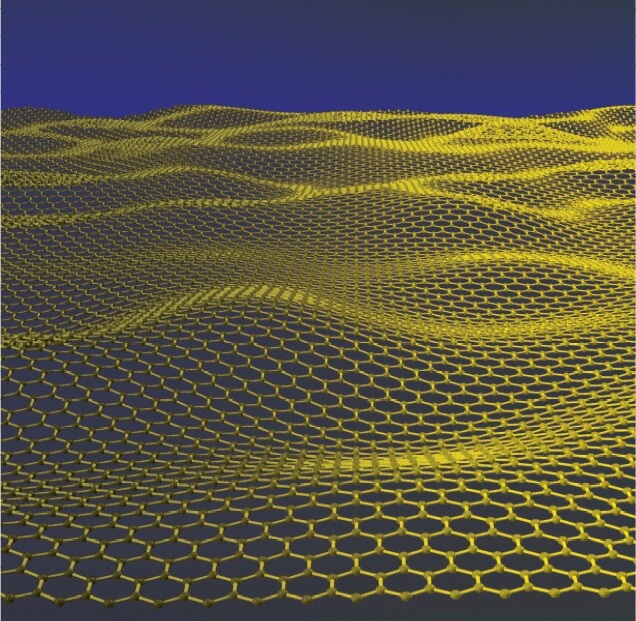At the University of Manchester, scientists have reported record-high magnetoresistance that emerges in graphene under ambient conditions.

Graphene. Image Credit: The University of Manchester
The study was reported in the journal Nature on April 13th, 2023.
Powerful materials that can alter their resistivity when subjected to magnetic fields are highly sought-after for various applications. For instance, magnetic sensors are used in every car and computer, making such materials indispensable.
However, these materials are rare, and most metals and semiconductors exhibit only a slight alteration in electrical resistivity at room temperature and in practical magnetic fields (usually less than a millionth of 1%).
To observe a powerful magnetoresistance response, scientists typically need to cool materials to liquid-helium temperatures to reduce electron scattering and enable the tracking of cyclotron trajectories.
Recently, a research group led by Professor Sir Andre Geim made an exceptional discovery: good old graphene, which has been studied extensively over the past 20 years, displays an incredibly strong response. It can reach over 100% in magnetic fields produced by standard permanent magnets (about 1,000 Gauss). This is a record-breaking magnetoresistivity for any known material.
People working on graphene like myself always felt that this gold mine of physics should have been exhausted long ago. The material continuously proves us wrong finding yet another incarnation. Today I have to admit again that graphene is dead, long live graphene.
Sir Andre Geim, Professor, The University of Manchester
For this to be achieved, the scientists made use of high-quality graphene in its initial state, where there are only charge carriers excited by temperature.
This made a plasma of fast-moving “Dirac fermions” that displayed amazingly high mobility despite regular scattering. Hence, both the high neutrality and mobility of this Dirac plasma are known to be vital components for the reported huge magnetoresistance.
Over the last 10 years, electronic quality of graphene devices has improved dramatically, and everyone seems to focus on finding new phenomena at low, liquid-helium temperatures, ignoring what happens under ambient conditions.
Dr. Alexey Berdyugin, Study Corresponding Author, The University of Manchester
Berdyugin added, “This is perhaps not so surprising because the cooler your sample the more interesting its behavior usually becomes. We decided to turn the heat up and unexpectedly a whole wealth of unexpected phenomena turned up.”
Scientists have made a fascinating discovery about neutral graphene: at high temperatures, it behaves as a "strange metal," a material where electron scattering is determined solely by the Heisenberg uncertainty principle. This is in addition to the record-breaking magnetoresistivity that has been observed.
The behavior of strange metals remains poorly understood, and scientists around the world are working to unravel this puzzle. Recent research out of Manchester has added to the mystery by demonstrating that graphene exhibits a remarkable linear magnetoresistance in fields above a few Tesla, which is only slightly dependent on temperature. This high-field magnetoresistance is truly unprecedented.
The phenomenon of linear magnetoresistance has been a mystery for over a century since it was first observed. However, the latest research out of Manchester provides important clues as to the origins of strange metal behavior and linear magnetoresistance.
It is possible that the mysteries surrounding strange metals can now finally be resolved, thanks to graphene. This material offers a clean, well-characterized, and relatively simple electronic system to study.
Undoped high-quality graphene at room temperature offers an opportunity to explore an entirely new regime that in principle could be discovered even a decade ago but somehow was overlooked by everyone. We plan to study this strange-metal regime and, surely, more of interesting results, phenomena and applications will follow.
Dr. Leonid Ponomarenko, Leading Author, The University of Manchester
Journal Reference
Xin, N., et al. (2023) Giant magnetoresistance of Dirac plasma in high-mobility graphene. Nature. doi.org/10.1038/s41586-023-05807-0.